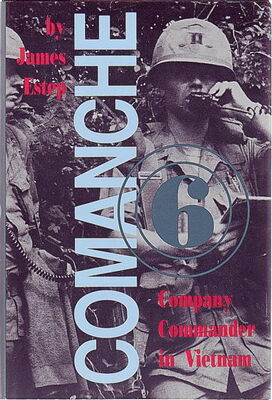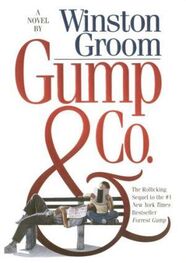With the signing of the Paris Accords, the United States had sixty days to get the remaining twenty-three thousand of us out of Vietnam.
In mid-February we closed the door on the team’s villa for the last time, bid farewell to the academy’s commandant and his staff, and hitched a ride on an ARVN Huey to Long Van. From there we’d catch a C-130 and fly south to Saigon and points beyond.
While waiting at Long Van for our C-130, I suddenly experienced an intense feeling of deja vu.
This is where it all started, at least for me. I first landed here ten years ago, nearly to the day! Across the strip there, the vacant and plainly deteriorating frame structures of the Fifth Special Forces Group’s headquarters still stand… appears the Viets are using what’s left of them for firewood. Can it be eight years since we processed through those buildings, heading for all our misadventures in a place called ARO? What had it all been about? A decade of my life, the best one, has passed, and I suddenly can’t seem to find purpose.
To hell with it! Like we used to say in the Cav, it ain’t no big thing.
Just get on the plane and go home.
29. Saigon, Vietnam: March 1973
On the eve of my departure from Saigon, I left one of the Army’s contract hotels on the outskirts of Tan Son Nhut’s main entrance and walked a bit.
I passed the villa in which—behind which—we youngsters of the seventy-six trombones” had spent our first night in the Nam so many years before. The massive cypress trees straddling its walled entrance had changed little; however, the villa looked much older, much smaller, and was in obvious need of paint.
Strolling on down the street, I stopped in one of the many bars that now dotted the area around the air base’s main gate and bought a Saigon tea for a completely disinterested young lady—a lady who knew the terms of the Accords—those that applied to her—far better than I did. All U.S. military personnel must be out of Vietnam by midnight on the twenty-ninth of March, an hour and date that were quickly approaching.
Our era had ended. We were no longer the saviors of her country or the providers of her welfare.
The following morning, thirty or so of us were bused to Tan Son Nhut for the last time. Out-processing was quick and efficient, and, after a shorter-than-usual wait, our flight’s departure was announced. This time, many civilian passengers were boarding with us.
Walking across the airport’s tarmac, I noted a North Vietnamese officer standing next to our aircraft, pencil in one hand and what I presumed to be the flight manifest in the other. He wore the all–too-familiar khaki uniform and pitched helmet, red star affixed thereto.
He was the enemy!
Who’s responsible for this, goddamn it? Who has permitted our enemy to inflict this final insult upon us? This bastard was fair game; he was “good hunting” a very short time ago. Now he’s allowed to solemnly, condescendingly check off our names as we…
Upon reaching the aircraft, I stopped and stared defiantly at my foe, momentarily holding up the boarding passengers behind me. He gazed back at me, an arrogant, triumphant look in his eyes.
I would like to kill you, I thought. If I had a weapon, I would.
Then it would all end right. There would just be the two of us, and you’d die, and I’d place a Cav patch on your chest and leave this country. Fulfilled.
I boarded the plane.
After we were airborne, I spent a few brief minutes gazing out the window, watching Vietnam quickly slip away below me. In no time paddies gave way to the South China Sea’s cobalt blue waters. Turning back in my seat, I was suddenly aware of a striking difference between this flight and the three that had preceded it. Always before, even while lying in a stretcher aboard my C-141 medevac, I had had a gut feeling I’d be back. I had no such feeling this time. I felt nothing at all.
What was it all about? Where is the meaning, the purpose in all of it?
Ten, nearly eleven years of my…
“Can I get you something to drink?” an attractive flight attendant asked, interrupting my thoughts.
“Well… how about a virgin Mary, with just a touch of vodka in it, please.”
She smiled, mixed the drink, handed it to me, and continued to work her way down the aisle.
What were the good and bad about it, the worth and waste of it all?
Hell, I don’t know, probably a little of—no, a lot of—both. Too deep for me; let someone else sort it all out in the future. I’m too tired to think about it right now. Yeah, eleven years’ tired. But it had been exciting! Good or bad, right or wrong, it had been exciting! Life is always better at the edge. Finishing my drink, I leaned back in my seat, closed my eyes, and let my thoughts drift.
“Comanche Six, this is Arizona Three inbound in zero five with four, plus two, plus two. There’s good hunting in the high country today.”
AK-47 — The enemy’s standard automatic weapon (of Soviet or Chi nese origin—7.62 mm).
AO — Area of operations.
APC — Armored personnel carrier.
ARA — Aerial rocket artillery (rocket-laden Cobra helicopters).
Arclight — B-52 bombing strike.
ARVN — Army of the Republic of Vietnam.
Blue Max — 20th Aerial Rocket Artillery Squadron.
BMNT — Before morning nautical twilight.
That time of day when the sun is twelve degrees below the horizon, allowing enough light for small units to move unhindered.
C&C ship (bird) — Command and control helicopter. A communications-laden HU-1D helicopter used by commanders and their S-3 operations officers to control ground operations.
C&D — Coffee and doughnuts. An austere breakfast of coffee, usually doughnuts, and at times other entrees such as oranges, apples, hard boiled or powdered eggs, and toast.
Cami stick — Facial camouflages.
CAR-15 — Shortened, carbine version of the M-16 rifle.
CEOI — Communications-electronics operating instructions. The RTO’s bible, it contains unit call signs, transmission procedures, secure codes, coding instructions, and so forth.
Charlie — The enemy. Initially Charlie referred to the Viet Cong or VC later the term encompassed North Vietnamese regulars. Also “Chuck.”
Charlie rats — Combat rations. Also called C rations.
CIB — Combat Infantryman’s Badge.
CIDG — Civilian Irregular Defense Group.
Class I — Rations.
Class V — Ammunition.
Class VI — Liquor (booze).
Claymore — U.S. antipersonnel mine.
CO — Commanding Officer.
Commo — Communications.
CP — Command post.
Divarty — Division artillery.
Dust off — Helicopter medical evacuation.
E tool — Entrenching tool, a small collapsible shovel.
Fast movers — Jet aircraft. Fighter-bombers of the Air Force’s Tactical Air Command, the Navy, or the Marine Corps.
FO — Forward observer. An artillery officer attached to an infantry company to coordinate artillery fire.
FRAGO — Fragmentary or frag order. Shortened version of a lengthy operations order. Used in a fast moving, fluid situation to maneuver forces quickly.
Gun target line — The path along which an artillery projectile travels from firing until it impacts.
Gunship — Armed helicopter.
H&I — Harassment and interdiction. Artillery fire directed at suspected, but unconfirmed, enemy locations.
HE — High explosive.
Hook — CH-47 helicopter, the Chinook.
KIA — Killed in action.
Kit Carson — North Vietnamese defectors in the employ of U.S. forces as guides, scouts, and, at times, interpreters.
Klick — Kilometer.
LAW — Light antitank weapon.
Читать дальше






